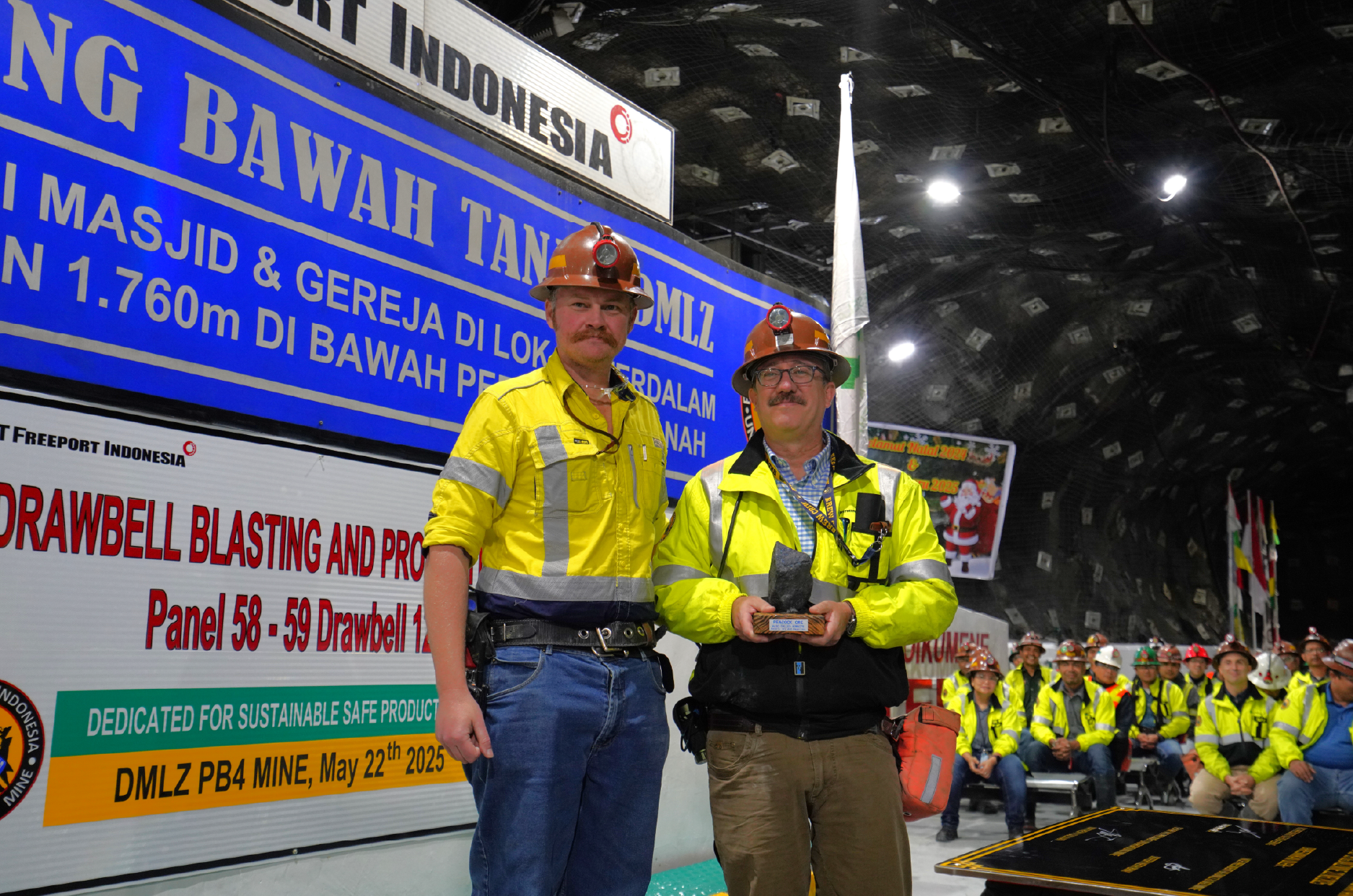A New Chapter for DMLZ: Behind the PB4’s First Production Blast
It all began with meticulous planning and preparation between DMLZ’s Engineering and Operations teams, utilizing two state-of-the-art drilling units, the Solo DL 422i and DL 432i, eight of the site’s best operators completed 1.700 meters of drilling across 15 drill rings. Then once again PT Freeport Indonesia's (PTFI) Deep Mill Level Zone (DMLZ) recorded another milestone, the successful execution of the first drawbell blast at Panel 58-59, Drawbell 12 in Production Block 4 (PB4) on May 17.
These four days process indicates both efficiency and precision and is the result of a complex process involving technical challenges, cross-functional collaboration, and advanced mining technologies, reflecting the future direction of PTFI’s underground operations.
The success of this initial drawbell blast carries strategic importance for PTFI’s future. PB4 is part of the broader expansion of the DMLZ ore body. Not only does it add new resources, but it is also specifically designed to mitigate seismic risks, which is a long a challenge in deep underground mining.
Matthew Sullivan, Senior Vice President of Underground Mine, noted that the journey towards PB4 began in 2015. In under five years, the team managed to design, build, and commission a completely new mining block. Making this an impressive feat on a global scale.
“If we look at places like Africa or Chile, these kinds of changes can take decades, even centuries,” he said. “But we were able to make it happen in a short time thanks to everyone's extraordinary dedication to safety and project success.”
Every stage of the PB4 project was executed with one priority above all: safety. A total of 9 tons of explosives were loaded into the blast holes, and the drawbell was safely detonated at 3:35 PM local time on Saturday.
Anton Priatna, VP of Underground Engineering, explained that one of the main challenges was limited access and unique geotechnical conditions. PB4 is located directly above the active PB2 production area, requiring the team to ensure rock stability and avoid negative interactions between old and new cave zones.
“We conducted continuous monitoring and verification to ensure the work area remained safe before executing the blast,” Anton stated. “Heavy equipment traffic management was also critical, as many different teams were involved in the process.” Anton explained.
On a project of this scale, teamwork is the key to success. Yan Sorondanya, General Superintendent of DMLZ Production, emphasized the spirit of unity that brought together different divisions, from development, construction, to production.
“We knew the risks were high as this is a new area with very different characteristics from PB2. But through consistent evaluation and strong coordination, the team was able to complete every step with discipline,” he said.
PB4 also stands as a clear representation of underground mining’s technological evolution. According to Andrew Collins, Production Manager of DMLZ, from the beginning the focus was on utilizing remote-controlled equipment, such as production drills, rockbreakers, and water cannons. Given the limited access and the location of PB4 above an active mining zone, this approach was essential.
Before the production could begin, the team conducted extensive core drilling and implemented a hydrofracking program to facilitate caving of the ore body. Without this, achieving the daily production target of 50,000 tons would have been unlikely.
Andrew also highlighted the critical role of advanced monitoring technologies, including personnel tracking systems, centralized blasting, and the integration of real-time operational data platforms. All of this is designed to create a safer, more efficient, and geotechnically responsive mining environment.
“PB4’s contribution will be significant, not only in terms of production volume, but also in safety and efficiency,” said Jeff Bray, VP of DMLZ Production & Development. “It’s a reflection of a more adaptive and sustainable future for mining.” Jeff also further emphasized that PB4 represents a critical step toward long-term operational sustainability.
The first blast at PB4 is not the finish line of PTFI’s mining process, it is the beginning of a long journey towards a safer and more productive mine of the future. Through cross-divisional collaboration, the usage of cutting-edge technology, and a strong spirit of collective effort, PB4 reflects a new direction for PTFI as one of the most advanced underground mines in the world. (Adeline Nathania)
Back To List












